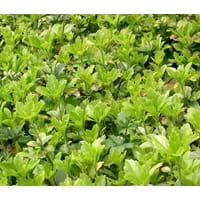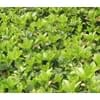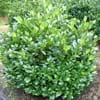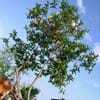Life Span
Perennial
Perennial
Type
Broadleaf Evergreen
Bulb or Corm or Tuber
Origin
China, Japan
South America
Types
Pachysandra procumbens, Pachysandra terminalis
Pamianthe cardenasii , Pamianthe parviflora , Pamianthe peruviana
Habitat
Deep, Hardwood forests, moist forests, Terrestrial
All sorts of environments
USDA Hardiness Zone
4-8
8-10
AHS Heat Zone
Not Available
10-8
Habit
Prostrate/Trailing
Clump-Forming
Flower Color Modifier
Bicolor
Bicolor
Fruit Color
Not Available
Green
Leaf Color in Spring
Dark Green
Dark Green
Leaf Color in Summer
Dark Green
Light Green
Leaf Color in Fall
Dark Green
Several shades of Green
Leaf Color in Winter
Dark Green
Light Green
Leaf Shape
Toothed
Strap shaped
Plant Season
Spring, Summer, Fall, Winter
Spring, Summer, Fall
Sunlight
Partial shade, Full Shade
Partial Sun, Partial shade
Type of Soil
Loam
Loam, Sand
The pH of Soil
Acidic, Neutral
Acidic, Neutral, Alkaline
Soil Drainage
Well drained
Average
Bloom Time
Late Spring, Early Summer
Spring, Late Spring, Early Summer, Summer, Late Summer
Tolerances
Not Available
Drought
Where to Plant?
Ground
Ground, Pot
How to Plant?
Rooted stem cutting, Seedlings, Stem Cutting
Offsets
Plant Maintenance
Medium
Medium
Watering Requirements
Needs more water during establishment
Keep the ground moist but not water-logged
In Summer
Lots of watering
Lots of watering
In Spring
Moderate
Moderate
In Winter
Average Water
Average Water
Soil pH
Acidic, Neutral
Acidic, Neutral, Alkaline
Soil Type
Loam
Loam, Sand
Soil Drainage Capacity
Well drained
Average
Sun Exposure
Partial shade, Full Shade
Partial Sun, Partial shade
Pruning
Remove damaged leaves, Remove dead branches, Remove dead leaves
Pinch or prune as they grow to promote branching and bushiness, Remove damaged leaves, Remove dead branches, Remove dead leaves, Requires little pruning
Fertilizers
All-Purpose Liquid Fertilizer
All-Purpose Liquid Fertilizer, High phosphorus
Pests and Diseases
Alternaria leaf blight, Red blotch, Stem rot
Leaf spot, Mosaic viruses
Plant Tolerance
Drought
Drought
Flowers
Insignificant
Showy
Flower Petal Number
Single
Single
Foliage Texture
Medium
Coarse
Foliage Sheen
Glossy
Glossy
Attracts
Ants, pollinators
Bees, Birds, Bumblebees, Butterflies, Hummingbirds, pollinators
Allergy
allergic reaction
Unknown
Aesthetic Uses
Ground Cover, Mass in beds, slopes
Beautification, Bouquets, Ornamental use, Showy Purposes
Beauty Benefits
Not Available
No Beauty Benefits
Environmental Uses
Air purification
Air purification
Medicinal Uses
Unknown
No Medicinal Use
Part of Plant Used
Fruits
Not Available
Other Uses
Planted in shelterbeds, Showy Purposes, Used for bedding in gardens
Beneficial species for attracting pollinators, Decoration Purposes
Used As Indoor Plant
Yes
No
Used As Outdoor Plant
Yes
Yes
Garden Design
Edging, Groundcover
Bog Garden, Container, Feature Plant, Foundation, Mixed Border, Water Gardens
Botanical Name
PACHYSANDRA terminalis
HYMENOCALLIS longipetala
Common Name
japanese spurge, japanese pachysandra, carpet box
Peruvian Daffodil, Spiderlily
In Hindi
pachysandra
peruvian daffodil
In German
Ysander
peruvian daffodil
In French
pachysandra
peruvian daffodil
In Spanish
Pachysandra
Pamianthe
In Greek
Pachysandra
peruvian daffodil
In Portuguese
Pachysandra
peruvian daffodil
In Polish
Runianka
peruvian daffodil
In Latin
Pachysandra
peruvian daffodil
Phylum
Vascular plant
Magnoliophyta
Order
Buxales
Asparagales
Family
Buxaceae
Amaryllidaceae
Genus
Pachysandra
Pamianthe
Clade
Angiosperms, Eudicots
Angiosperms, Monocots
Tribe
sarcococceae
Clinantheae
Subfamily
NA
Amaryllidoideae
Number of Species
Not Available
Not Available
Season and Care of Pachysandra and Peruvian Daffodil
Season and care of Pachysandra and Peruvian Daffodil is important to know. While considering everything about Pachysandra and Peruvian Daffodil Care, growing season is an essential factor. Pachysandra season is Spring, Summer, Fall and Winter and Peruvian Daffodil season is Spring, Summer, Fall and Winter. The type of soil for Pachysandra is Loam and for Peruvian Daffodil is Loam, Sand while the PH of soil for Pachysandra is Acidic, Neutral and for Peruvian Daffodil is Acidic, Neutral, Alkaline.
Pachysandra and Peruvian Daffodil Physical Information
Pachysandra and Peruvian Daffodil physical information is very important for comparison. Pachysandra height is 6.00 cm and width 60.00 cm whereas Peruvian Daffodil height is 61.00 cm and width 61.00 cm. The color specification of Pachysandra and Peruvian Daffodil are as follows:
Pachysandra flower color: White
Pachysandra leaf color: Dark Green
Peruvian Daffodil flower color: White
- Peruvian Daffodil leaf color: Dark Green
Care of Pachysandra and Peruvian Daffodil
Care of Pachysandra and Peruvian Daffodil include pruning, fertilizers, watering etc. Pachysandra pruning is done Remove damaged leaves, Remove dead branches and Remove dead leaves and Peruvian Daffodil pruning is done Pinch or prune as they grow to promote branching and bushiness, Remove damaged leaves, Remove dead branches, Remove dead leaves and Requires little pruning. In summer Pachysandra needs Lots of watering and in winter, it needs Average Water. Whereas, in summer Peruvian Daffodil needs Lots of watering and in winter, it needs Average Water.





